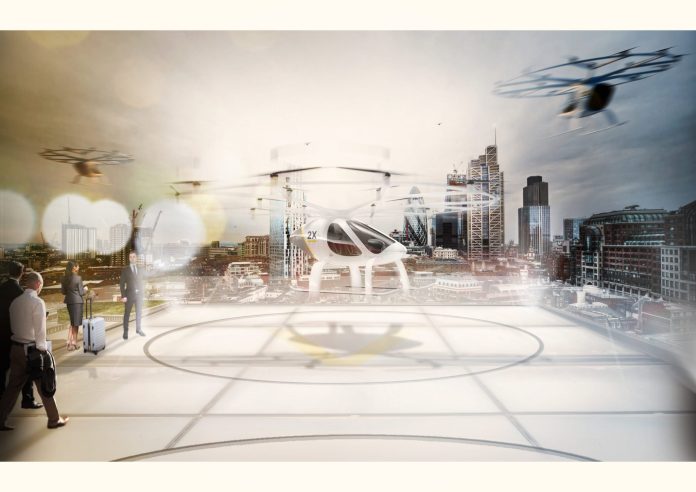UK start-up Skyports is ramping up activity in the US as it seeks to establish an international network of helipads for flying taxis and drone deliveries.
Skyports has so far secured 15 rooftops in London as ‘vertipads’ for passenger and cargo drones. It is currently negotiating on further sites in London, and has expanded into Finland and the US, as well.
“We have 15 in London and a number more under negotiation. We have started work on the east coast of the US and are working with a company in Finland, which has a very progressive aviation authority to start operations there,” commented Duncan Walker, managing director at Skyports.
He refused to reveal the identity of the Finnish partner, nor the nature of its work on the East Coast of the US. “We are continually on the lookout for new markets with a strong business case and progressive regulatory environments,” said Walker.
Besides venues, Skyport is offering technology, regulatory advice, and operational skills around drone operations.
In London, the company is focused on deliveries within the M25 ring-road. Its 15 existing rental sites are all huddled between Paddington and Whitechapel in central London, with a scattering south of the Thames, towards Clapham and Greenwich. All sites can accommodate cargo drones, for parcel deliveries; about half are large enough to support passenger drones.
Walker explained: “We look for properties located in the areas of most significant need – in highly populated areas with lots of congestion and most friction in terms of moving people and goods around. They key for us is location, accessibility, and the building itself.”
Skyports is considering a variety of property types, including multi-storey car parks, office buildings, residential blocks, self storage buildings. Sites are to be equipped with goods and passenger handling facilities, recharging equipment, and communications and guidance equipment.
Cargo vertiports, already operational in some markets, will be used by the likes of UPS, Fedex, DHL, as well as logistics companies involved in the delivery of food and other items. They can fit into a space no larger than two car-parking spaces.
Passenger vertiports, waiting on the technology and regulation to develop, will be used by ‘flying-taxi’ operators such as Uber to collect and deliver passengers. They require a plot at least as big as two tennis courts.
Drones are already delivering mail in Singapore, laboratory samples in Switzerland, blood in Africa, and commercial packages in China. Within five years, drones deliveries will be commonplace is many cities, including London, reckons Walker.
“The technology will also develop so what they deliver will be increasingly complex and sizeable,” he said.
As yet, London has no ‘vertiports’ receiving drone traffic. Its airspace is complicated, noted Walker. “It features a number of airports and dense use of the sky. It won’t be the first adopter, but it will catch up quickly, because it has a progressive aviation authority committing lots of energy to regulating this space.”
The question for aviation authorities is whether to create a “unique rulebook”, or to standardise operations across regions and markets. “There is a lot of work going on in both directions at the moment,” said Walker.
As an example, the gnarly issue of unmanned flights going ‘beyond the visual line of sight’ (BVLOS) remains unsolved. “That has legal, technological, ethical, political and other implications,” he said. Such challenges can be overcome, he explained, so long as the various agencies and industries work together.
“It’s not an easy question, and not an easy answer. But there is a lot of momentum and desire to get this right… Many cities are already working with drones. Those with the most progressive authorities are leading. Regulation will lag behind, so first adopters will be the quickest to solve the puzzle.”
Walker commented: “Drone technology is in its infancy. The scope of what will be possible is hard to conceive. A limiting factor is battery technology. Better battery capacity increases range and payload, and opens up increasingly exciting opportunities. Packages, people, surveillance, inspection are all areas which can be revolutionised by drone technology.”
Beyond transportation of people (“this could change cities dramatically”) and transportation of goods (ranging from life-saving medicines to commercial applications”), the most promising development in the drone space is around industrial applications. Their usage in farming illustrates their potential, reckons Walker.
“Drones are now surveying farms to look at crop productivity. The software can identify areas of infestation, what type of infestation and can communicate with ground vehicles to apply exactly the right type and amount of pesticide in exactly the right area. This is hugely time and cost efficient, but also very environmentally friendly.
https://www.youtube.com/watch?v=4cOjSxLSB8A&feature=youtu.be

